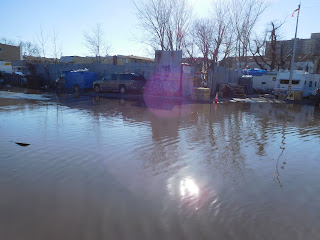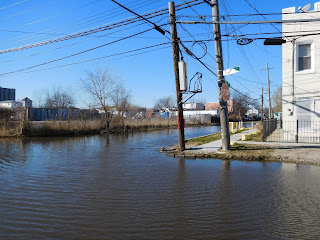After a perfect summer weekend, another heat wave has swept over this city.
Now, those of you who live in places like western Texas or southern Arizona might chuckle when folks like me complain about the heat in New York. I’ll concede that we don’t know (at least not yet) what it’s like when your nighttime temperatures are like ours in the afternoon. But our hot days come with humidity that turn our streets into saunas.
Anyway, knowing that we are heading for The Nineties (in Fahrenheit temperature and humidity), I went for a morning ride that took me back and forth between Queens and Brooklyn.
Street destruction (Why do they call it construction?) detoured me onto Hewes Street, one of the narrow, warrenlike thoroughfares in the part of this city that most closely resembles a pre-war stetl: the Hasidic part of Williamsburg, where it borders Bushwick.
One way you know a neighborhood is changing: You see “ghosts.” I can’t help but to imagine the lives that filled and voices that echo walls of bubbling, flaking bricks and shingles. But I also notice another kind of “ghost”: a long-concealed sign or banner from a business that served as past residents whom current residents will never know.
“Ghost” signs like the one I saw today on Hewes Street have led me down a rabbit hole or two. What kinds of “beauty preparations” did Nutrine make or sell? Who used them, and what image of “beauty” were they trying to achieve.
That image, I imagine, might have burned as brightly and hazily as a heat-wave afternoon in the imaginations of those in whom it was inculcated it—and those who inculcated it.




















